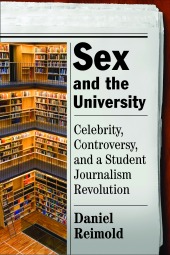University of Illinois Urbana-Champaign head football coach Ron Zook is raking in $1.06 million this year. University president Michael Hogan is earning a little more than half of that. And the highest-paid employee at UIUC not in athletics, medicine or the highest reaches of the administration: Michael Moore, a law professor whose base pay is close to $300,000 this year.
—
These snippets are part of a comprehensive public salary database put together roughly two years ago by The Daily Illini. Since its launch, the regularly-updated feature has been the most-visited portion of the student newspaper’s website every day.
—
—
Below, DI editor in chief Melissa Silverberg shares the story of the database’s creation and outlines another innovative newspaper project, DI Live.
—
—
How was the salary database put together?
—
The decision to publish the salary guide really came out of a desire for more openness from our university. In summer 2009, the Chicago Tribune published an investigation into University of Illinois admissions practices, which discovered a “clout list” of applicants allegedly admitted to the university because of their connections to powerful state legislators or administrators at UI. This all came in the year following former governor Rod Blagojevich’s arrest and impeachment. There was an ethics investigation panel set up by the new Illinois governor– and by October the UI president, chancellor, and nearly the entire board of trustees had resigned.
—
—
Between the economy and the fact that the budget in the state of Illinois is one of the worst in the nation, the University of Illinois has been going through difficult budget times. Also, during the 2009-2010 school year, our graduate and teaching assistants went on strike, tuition went up 9.5 percent, and the interim president announced furlough days. If there was a time for transparency, openness, and letting the university community know where their money was going, it was then.
—
We published a print version of employee salaries for the Urbana-Champaign campus, including anyone above $30,000 and included comparisons of our football and basketball coaches as well as our presidents to other Big Ten universities. We also created an online database (which is coded in PHP) with the entire salary listing for all three campuses of the University of Illinois. The site went live in March 2009. We updated it in November 2010. It will now be an annually-updated feature on our site.
—
—
What were the challenges of creating it?
—
The most difficult part was actually getting the information. We filed at least three different Freedom of Information requests and talked with another college paper as well as the St. Louis Post-Dispatch, who had both created salary databases on their websites. We just had to figure out the right way to ask for the information so we would receive the entire salary listing, in the correct format. We needed the listings in an Excel document to feed into our database. We didn’t want to have to do any retyping of names or salaries because we wanted to avoid any possibility for error on our end.
—
—
Explain the basics of your other interactive special project, DI Live.
—
DI Live is a new feature we added to our website this fall. We were looking for a way to combine interactive features and several different content types on one topic page. Our website is built in Drupal, and we wanted a way to make it more interactive and different based on whatever topic was the talk of campus at the time. We’ve used them for campus crime, football games, breaking news, and investigative stories.
—
—
The different story types are set up in the back end and we can place them anywhere on the page we want. Working in Drupal, we build each DI Live page from scratch using panels. This took some training, but it has really been worth it. Basically with DI Live we have to think about a story and the way it should be told for the readers, before actually doing the work.
—
For example, an Illini football game: We have stories written by our sports writers before the game, photos from the previous year, a live chat during the game done on CoverItLive, tweets from any users using the hashtag #Illini, photos from users posted to Flickr, audio collected, polls for our users to vote in, etc. We were able to put all of that on one page in an organized way and let our readers interact before, during, and after the game. We used DI Live for every football game this fall.
—
—
The first time we used DI Live for something other than sports was the 2010 election, where again we started thinking about the way the story needed to be told before we did any reporting. This top-down organization really makes our coverage more complete. DI Live allows us to put many elements of one story all in one place, rather than making the reader search all over our site for them.
—
—
As editor, how do you balance overseeing the regular grind of daily news production with helping plan these special projects?
—
It’s important to have a strong staff working on the daily newspaper so that my managing editors and I can step back and plan larger projects. We try to have regular meetings between the executive team of editors to plan larger projects as well. It’s also required for the editor in chief to stay over the summer, which is a great time to plan large projects and look critically at our coverage overall. I’m lucky because I have great editors in many positions so I know that the newspaper will come out every day no matter what, which gives us some room to go above and beyond and take the next steps toward planning special projects.












































